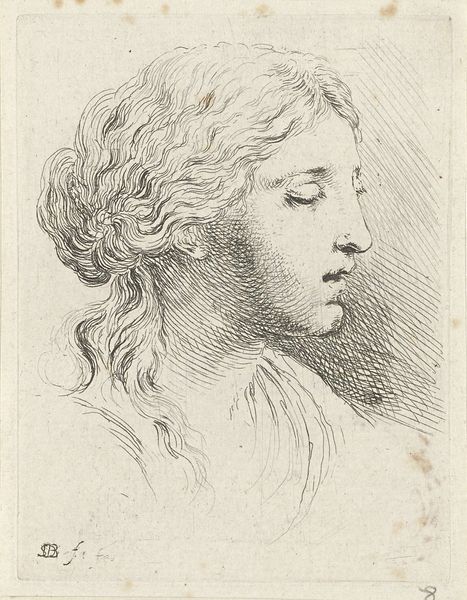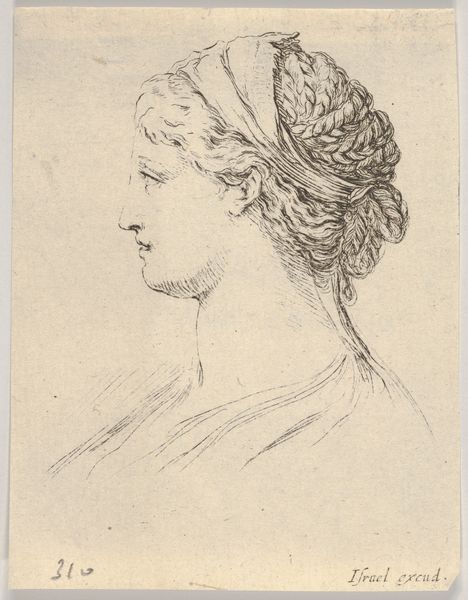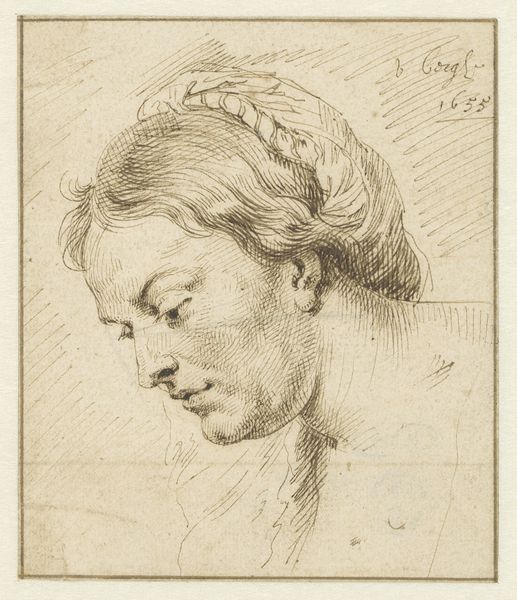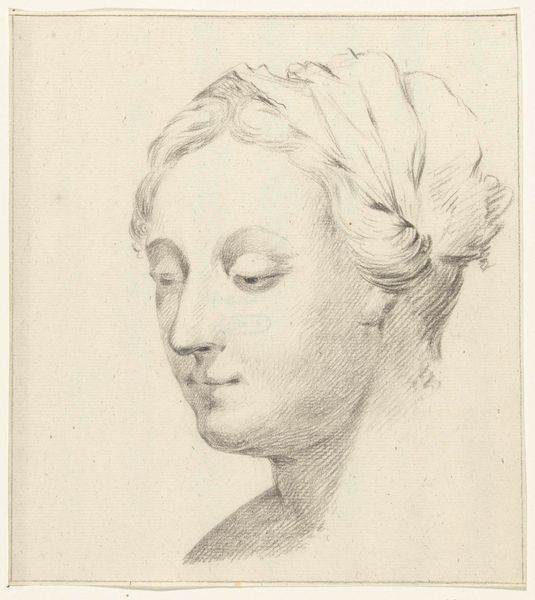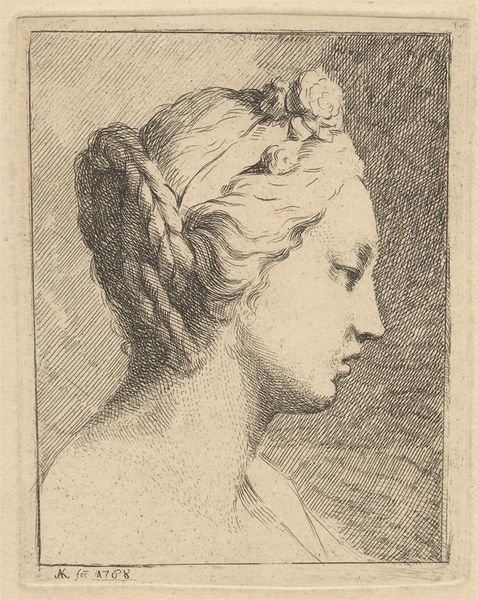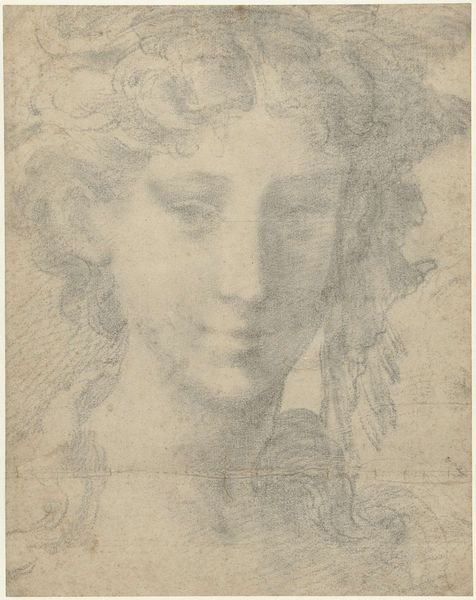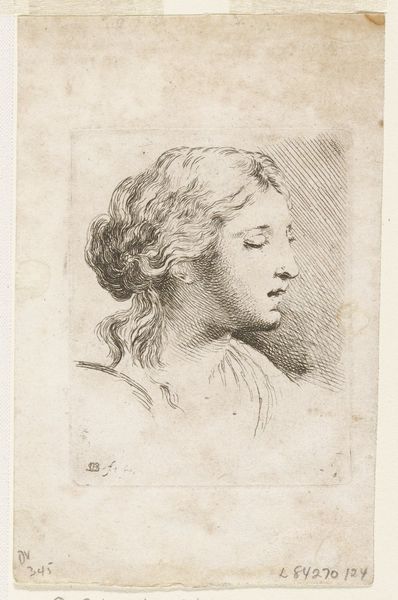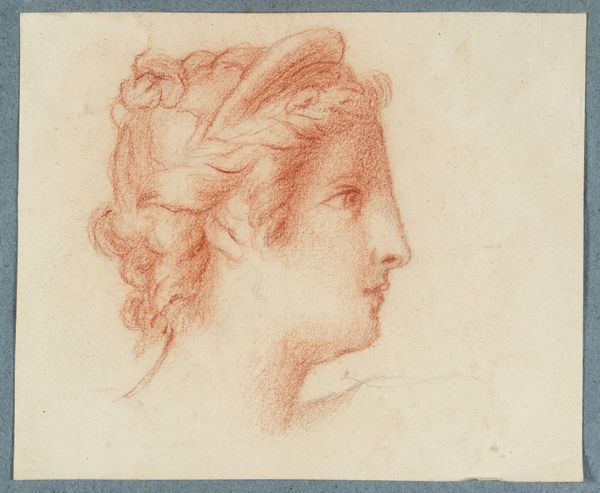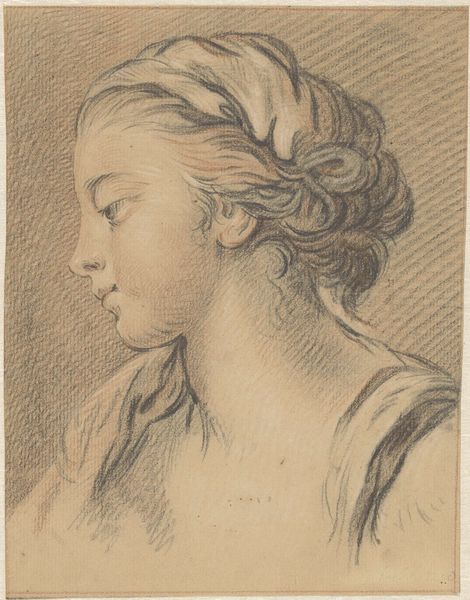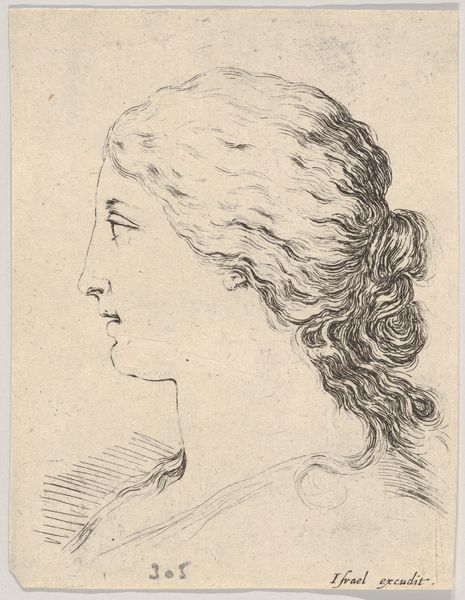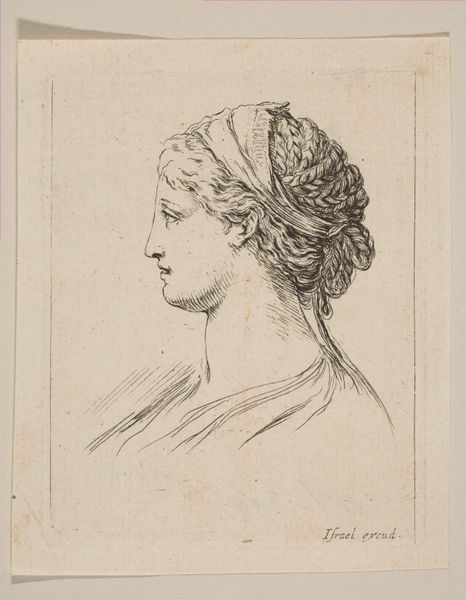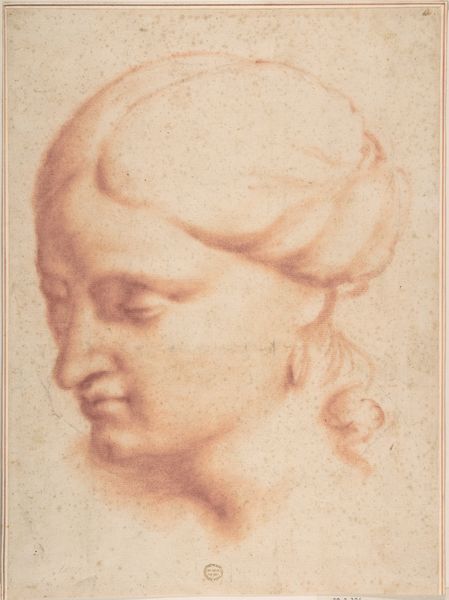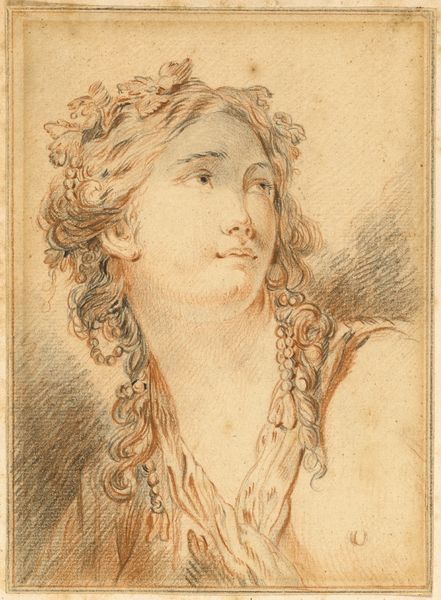
drawing, paper, pencil
#
portrait
#
pencil drawn
#
drawing
#
baroque
#
figuration
#
paper
#
form
#
pencil drawing
#
pencil
#
line
#
portrait drawing
Dimensions: height 195 mm, width 138 mm
Copyright: Rijks Museum: Open Domain
Curator: Bernard Picart's "Head of a Woman, in profile to the right," made with pencil on paper sometime between 1683 and 1733, captures my eye today. What do you make of it? Editor: Intimate, somehow. Like stumbling upon a fleeting moment captured in sepia tones, even if it's pencil. There's a fragility that almost transcends the medium. Curator: Precisely! Picart uses line, contour and shading, to give volume to his subjects. There’s a controlled confidence here. Look closely at the direction and varying weight of the lines which follow a structure that conveys depth. We see the turn of her neck and shoulders. Editor: Yes, but beyond the structure, there's a softening. The hair is not just an arrangement of shapes; it hints at a character, a moment of repose or perhaps a restless night. Almost as though the baroque's grandeur is about to quietly dissolve into something more human. Curator: Consider also the historical context, she exemplifies an academic model. The baroque portrait tradition sought to capture the sitter’s likeness but within established, recognizable aesthetic codes and social conventions. Editor: I find that fascinating. Knowing those established visual conventions allows you to deconstruct the portrait, read its nuances and subversions with so much more depth. It reveals an attitude and emotion that makes the woman seem like more than just another period portrait. It creates a sense of wonder, almost a personal dialogue between myself, the subject, and the artist. Curator: That sense of dialogue is a powerful observation. We know Picart worked across multiple artistic genres and this work embodies qualities of both the baroque and emerging rococo styles. His skillful employment of both precise detail, and fleeting suggestion offers not just likeness but something deeper. Editor: It makes you consider how artworks function, both within their historical moment and across time as they come to mean differently to different people. It's less about fixed meaning and more about continual encounters and exchanges. Curator: Ultimately it is a wonderful example of technical artistry combined with humanistic expression. Editor: A dance between the era's formalism and the individual's quiet drama.
Comments
No comments
Be the first to comment and join the conversation on the ultimate creative platform.
